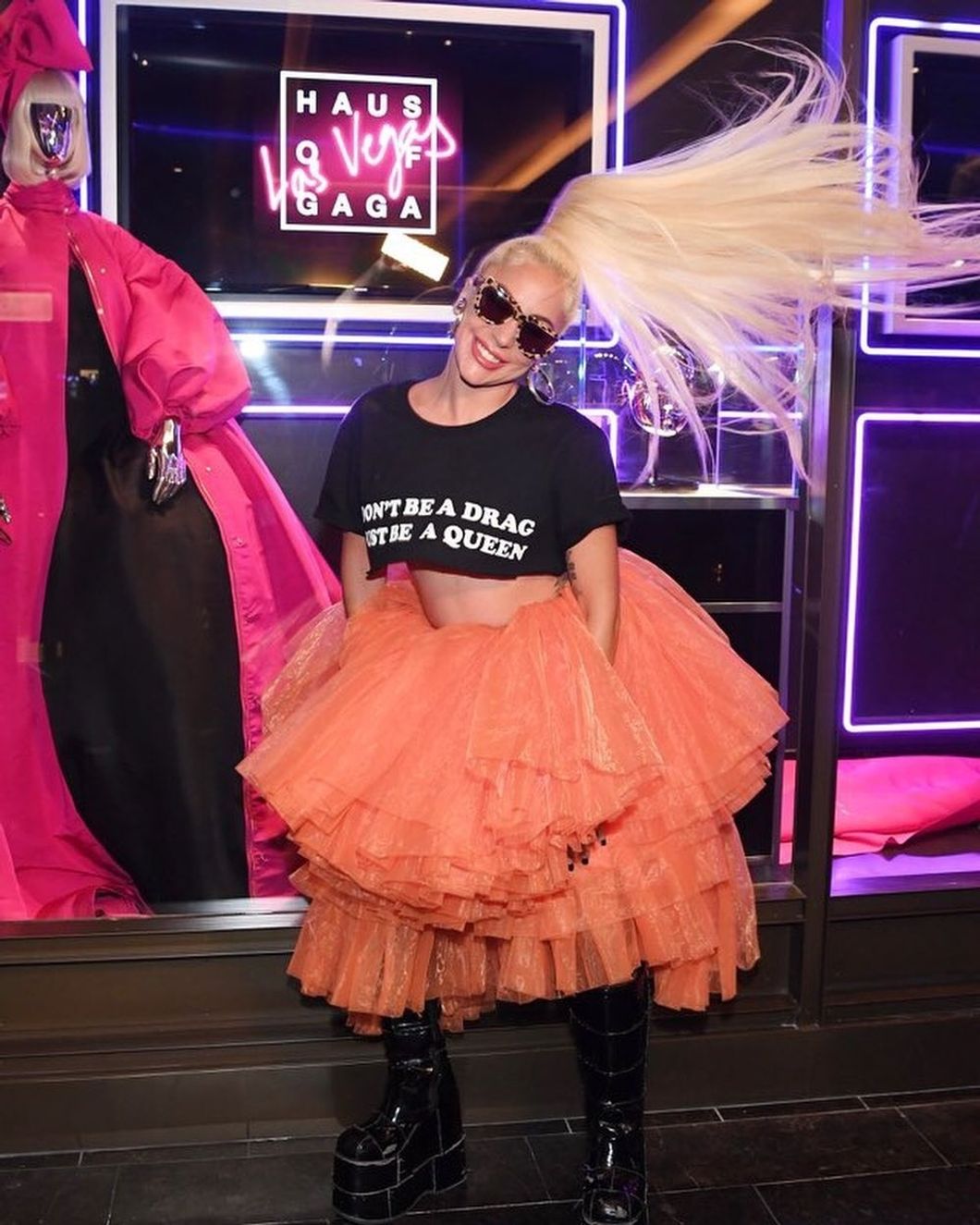From Stonewall to the Presidential Race, members of the LGBTQ+ community have come a long way in their fight for sociocultural and political reform. As their struggle for basic human rights and freedoms continues, however, it is the revolutionary icons of the past and present alike that have served as beacons of hope for the future, and emblems of assurance that the fight will never be over until every human sees other humans as of value, worthy of respect, and deserving of love, regardless of their race, class, ability, gender, or sexuality.
With hearts, passions, dreams, and journeys as unique and unapologetic as the people themselves, the fashions of the LGBTQ+ community have inspired and have often been the—uncredited—curators of pop culture's biggest and most widespread fashion trends. Of every LGBTQ+ designer, activist, editor, artist, musician, and public figure, here are some of the most influential members of the community who brought queer culture into the spotlight, but created a legacy allowing it to shine for more than the fabled fifteen-minutes of fame.
1. Marlene Dietrich

Dietrich in the 1930 film Morocco by Josef von Sternberg
Paramount Pictures, Josef von Sternberg
In post-World-War-I Weimar Berlin, Marlene Dietrich was the undoubted queen of the silver screen, appearing in Germany's first talking picture, Der Blaue Engel (The Blue Angel), in 1930. During the disarray that followed the First World War in Europe, Dietrich fully embraced the sexual liberation and fluidity that dominated the era of the region, and never tried to hide her preferences at any point throughout her over sixty-year career, showcasing her indifference to criticisms about gender or cultural norms in the most visible way possible: her sense of fashion.
In celebrating her sexually alluring and ambiguous persona, Dietrich's signature look became wearing men's clothing—tailcoats, tuxedos, bowties, top hats and all—challenging all notions of what a woman should look like, act, or dress in that era. Often called a vamp, temptress, or dangerous woman ("femme fatale"), Dietrich embraced this image, and used it as her strength rather than as something that could be used against her. Marlene's presence within the thriving gay community of Berlin in the 1920s led her to develop numerous romantic relationships with both men and women and was regarded as one of the most mysterious, yet influential women of the Golden Era, paving the way for generations of actresses to come.
2. Judy Garland
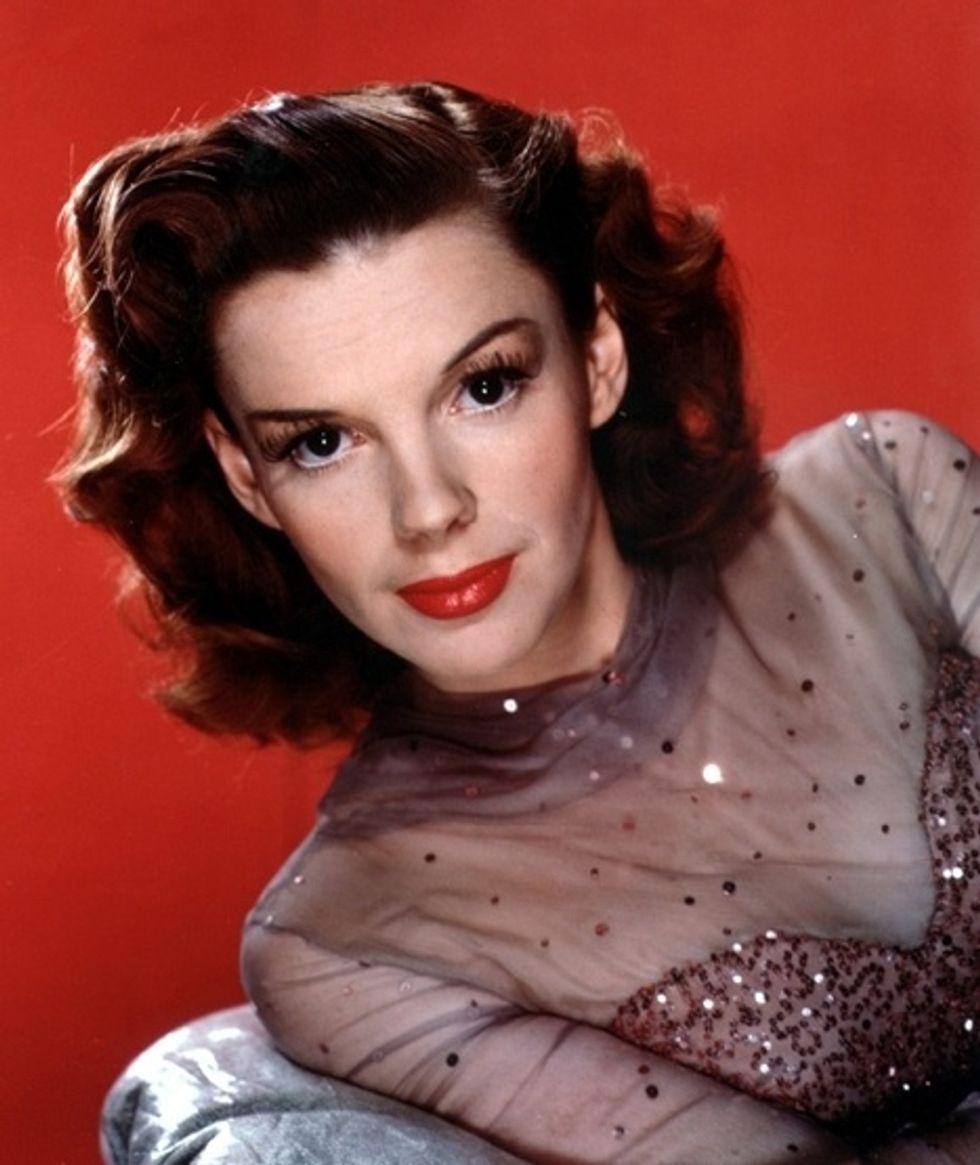
Skyrocketing to fame at just 16-years-old in the 1939 film The Wizard of Oz, Garland's life was riddled with personal struggles fueled by pressures from production companies and the weight of fame; however, these difficulties exalted Garland to become somewhat of a gay icon, as many gay men of the period found that her personal struggles mirrored their own. Despite never publicly coming out as gay, for obvious generational reasons, several news outlets, including a 1967 Time magazine article noted that a "disproportionate part of [Garland's] nightly [visits to gay bars] seems to be homosexual," as well as several other rumors that her father, second, and fourth husbands were either gay or bisexual too. Similarly, it is often theorized that Garland's song "Over the Rainbow" served as a segment of the inspiration used for the creation of the Pride Flag in 1978.
Following the success of The Wizard of Oz, it was thought that every little girl in America wanted a pair of ruby slippers to find that "there's no place like home." These costume and acting choices, however, did not only resonate with the young girls of the world but also with the "underground" gay community of the first half of the twentieth century, too, solidifying Garland's place as an icon of Camp fashion. Gay film scholar, Richard Dyer, asserted that Garland was "imitable, her appearance and gestures copiable in drag acts."
3. Andy Warhol

Campbell's Soup Cans and Marilyn Diptych were only the beginning. First exhibiting examples of his craft in the 1950s, Warhol became an icon of the pop art movement of the early 1960s, using painting, photography, silk screening, sculpture, and film to explore the correlation between celebrity culture, advertising, and artistic expression. He was known for seeking out specific muses, and bringing them into the fold of his aesthetic, appeal, and creative mind in 1960s-1970s New York when art, sexuality, and freedom influenced pop culture.
Possibly so as to not take away from the appeal of his colorful works, Warhol is said to have popularized clear glasses, all-black, turtlenecked ensembles, safari jackets, shearling, and platinum gray-blond hair, (un?)intentionally cultivating the minimalism movement, and proving to the world that what you wear does not necessarily have to be a representation of who you are, but rather that "The idea of waiting for something makes it more exciting."
4. David Bowie
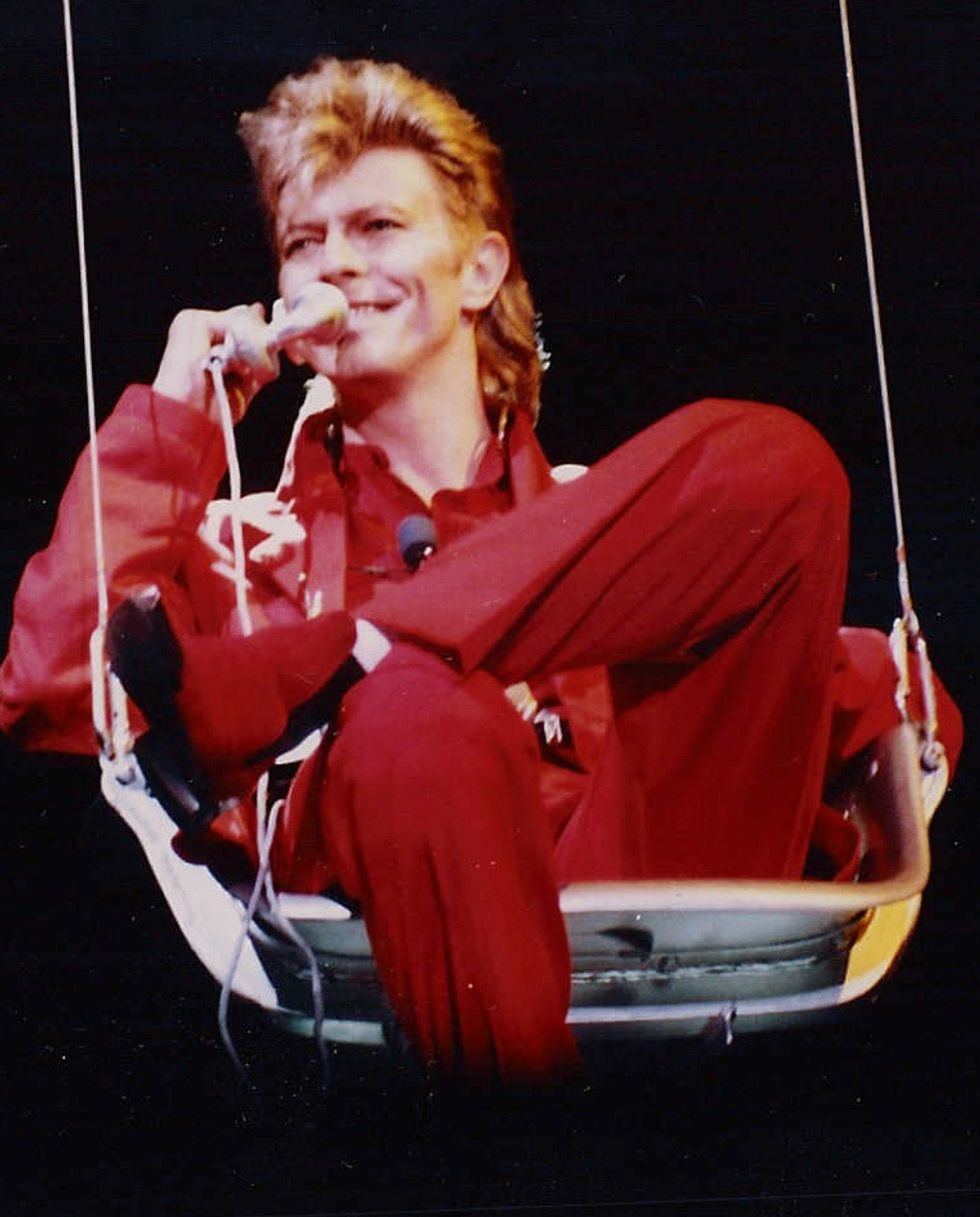
Elmar J. Lordemann - Creative Commons - Sharealike License Germany
"Im not a prophet or a stone aged man, just a mortal with potential of a superman," sang David Bowie in his song "Quicksand", and to the world of pop culture, he was a new kind of superman. Creating his androgynous alter-ego or persona, Ziggy Stardust, in 1972, Bowie became an icon of the gay community for bringing queer culture into mainstream media around the world. Using fluidity, sexuality, and fashion as channels for his creative expression, Bowie was known for outrageous ensembles that encapsulated the aura of each of his albums, including channeling "an effete street urchin in a vintage frock", Greta Garbo, Marlene Dietrich, and most recognizably the jagged red hair and lightning bolt face makeup of the Ziggy Stardust era.
5. Sir Elton John

Elton on The Elton John and Cher Show in 1975
Unafraid of being bold, Oscar-, Tony-, Brit-, and Grammy-award-winning English musician Sir Elton John has been a legend of both the entertainment world and LGBTQ+ community since the release of his first album, Empty Sky, in 1969. A beacon of the United Kingdom's glam rock era (alongside other artists like Bowie and Freddie Mercury), some of John's most famous looks included star-spangled shirts; denim jumpsuits covered in colorful patches, rhinestones, or both; suits with extravagant embroidery; feather boas, enormous headpieces, fur coats, oversized colorful sunglasses, fluorescent colors, all-things metallic. Alongside his musical and fashion interests, at 72 years old, Sir Elton John also prioritizes his involvement in his Elton John AIDS Foundation, established in 1991 after getting involved with the cause at the epidemic's peak in the 1980s. Through both the United States and UK branches of the foundation, over $325 million has been raised over the past 25 years to continue AIDS research.
6. Freddie Mercury

Rounding out music's "Holy Trinity" of the glam rock era, Freddie Mercury of British rock band Queen shocked the world with his powerful voice, unbelievable range, and signature sense of style. The never-modest Mercury refused to shy away from flamboyance, opulence, or drag, wearing pieces like red patent leather, plush mantels, yellow army jackets, skintight, lightening-emblazoned jumpsuits, and Kabuki-inspired outfits with the utmost confidence. Not only did Mercury elevate the standard of rock 'n' roll fashion in the 1980s, but he did so with an air of self-assurance, freedom, creativity, and pride that told the world that he had nothing to hide, so it better pay attention.
7. Julian Eltinge

Eltinge in the 1911 film, The Fascinating Widow
White Studio - New York Public Library
With roots dating back to the seventeenth century, the Art of Drag is believed to originate with male actors who portrayed women in Shakespearean plays and later in vaudevillian entertainment of the late-nineteenth and early twentieth centuries. Combining song, dance, comedy, and burlesque, vaudeville quickly became popular in urban areas of the United States. Through this, the first well-known drag queen, Julian Eltinge, skyrocketed to stardom, surpassing even Charlie Chaplin to become the highest-paid actor in the world at the time.
Exhibiting grace and femininity on stage, breaking down fashion barriers and setting new cultural norms (for example wearing short dresses with "provocative" necklines), Eltinge, unfortunately, used a hyper-masculine facade in order to quell rumors of homosexuality, despite no record of any male lovers. An icon of the Prohibition-era "Panzy Craze", Eltinge set the stage for the underground speakeasy and nightclub drag culture to come.
8. RuPaul Charles

RuPaul in 2007
Thanks to the example set by drag queens like Eltinge and the thousands more to follow, RuPaul Charles (aka Mama Ru) has become the most visible, outspoken, and prominent Queen of the late twentieth and early twenty-first centuries. Wearing numerous hats throughout his career, both literally and figuratively, RuPaul is an Emmy-winning television show host, with his decade-long, highly successful shows RuPaul's Drag Race and RuPaul's Drag Race: All Stars; a recording artist; an author of several acclaimed books; an LGBTQ+ rights activist; the mastermind behind the annual DragCon conventions, and a fashion icon, donning everything from pink zebra-print suits to lilac tulle masterpieces, bolo ties to brightly colored, rhinestoned atelier gowns and perfectly coiffed wigs. There's nothing Mama Ru can't and doesn't do...can I get an Amen up in here?
9. The Designers That Broke Barriers And Changed Fashion Forever
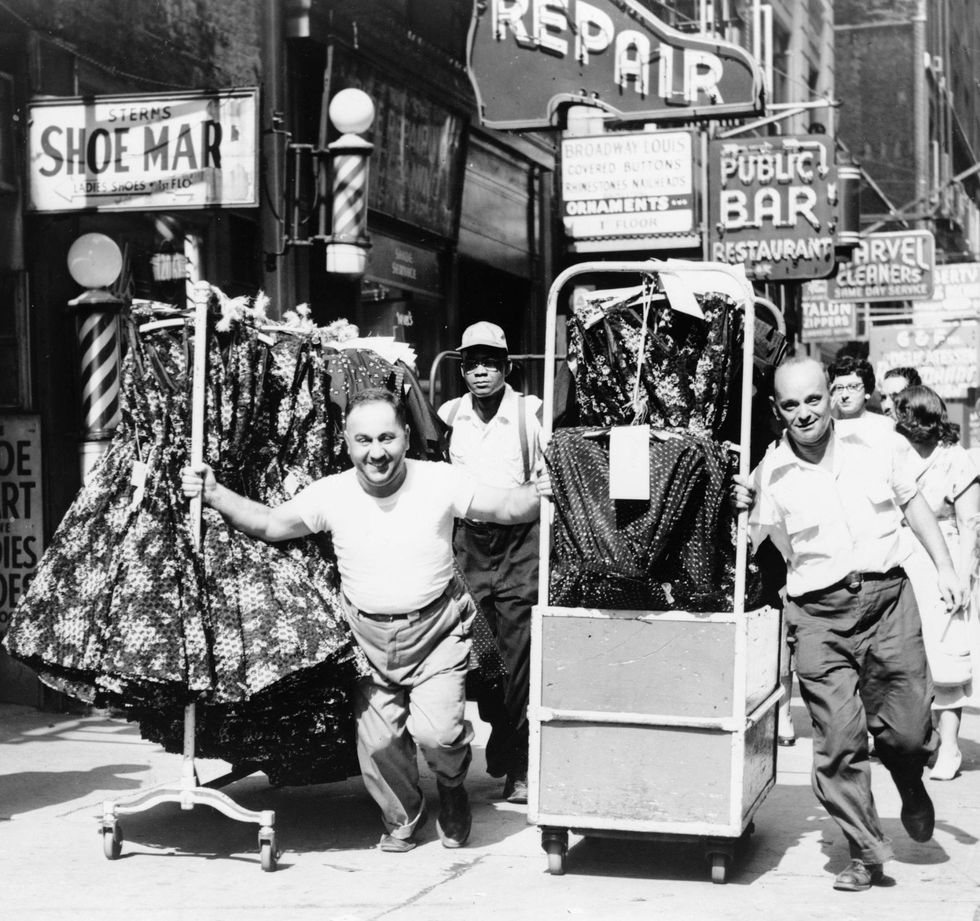
New York City, 1955
New York World - Telegram and the Sun staff photographer
With too many icons to name them all, the numerous male and female designers from across Europe and North America alike that set the stage for the current world of fashion, and continue to inspire designers, dreamers, and consumers, each brought something new and different to their time, that left a lasting mark still visible today. Early revolutionaries like Thierry Hermés, Louis Vuitton, Coco Chanel, Christian Dior, Yves Saint Laurent, Valentino Garavani and more, brought old-world, classic elegance, clean lines, and a care for luxury to the age of industrialization, or Golden Age, of fashion in France and Italy, introducing upper-class men and women to a refinement and sensibility that was not so much about exhibiting femininity or masculinity, but rather about elevating your personal narrative in whatever way you choose to do so.
For the latter half of the twentieth century, as the LGBTQ+ rights movement spread across the nation, designers like Emilio Pucci, Paco Rabanne, Diane von Furstenburg, and Vivienne Westwood delivered palazzo pantsuits, bedazzled garments, and—in the case of Vivienne Westwood—bondage pants, platform shoes, and the 1980s' passion for punk. Similarly, visionaries like Gianni Versace, Jean Paul Gaultier, Marc Jacobs, and Karl Lagerfeld carefully curated the chic, high-fashion gowns worn by royals and celebrities alike, as well as the elevated streetwear of "It" kids of yesterday and today.
10. Madonna
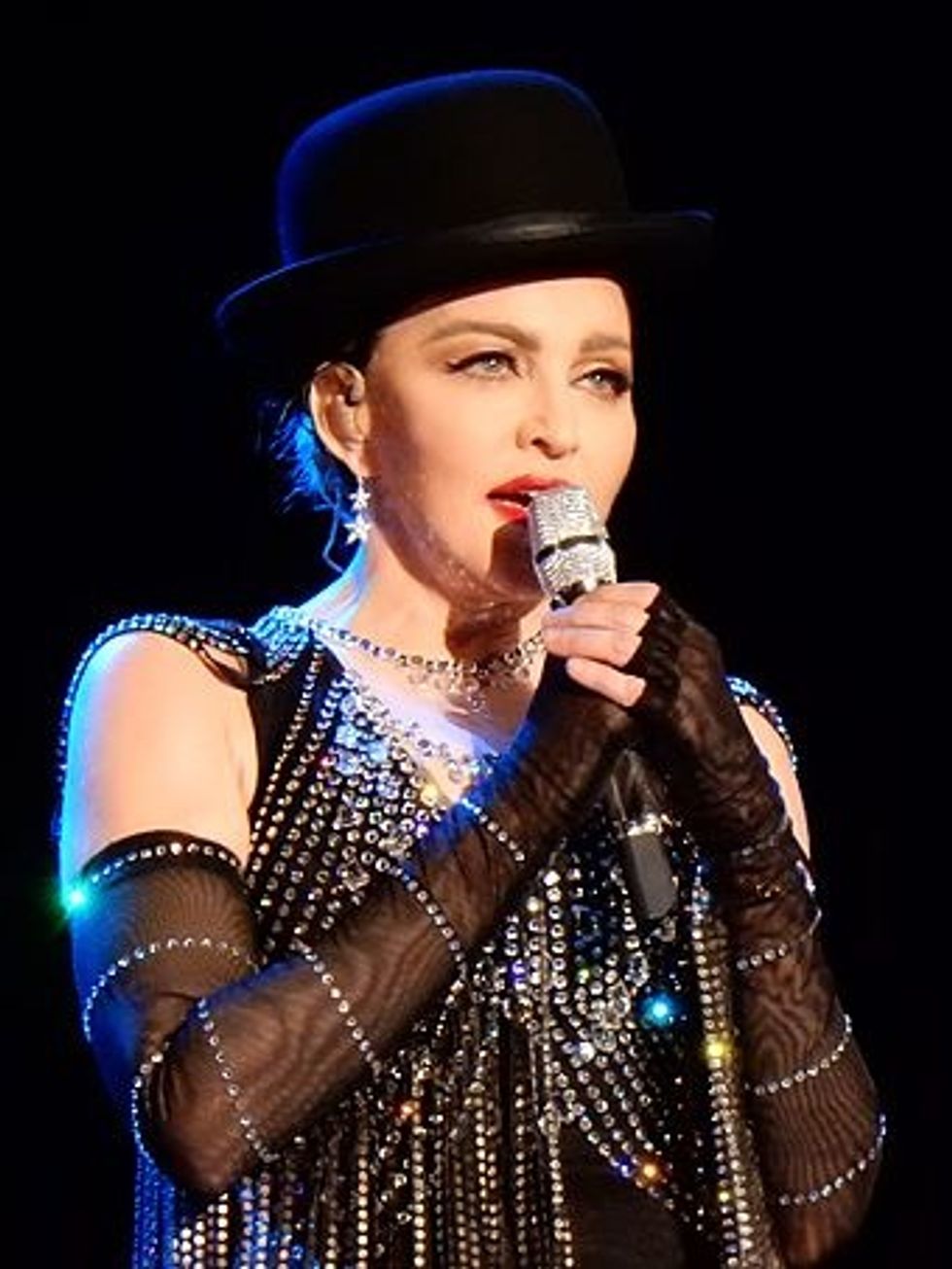
Rebel Heart Tour, 2015
This "Queen of Pop" and "Material Girl" did not simply come up with these titles on her own, but rather used her incredible talents of singing, songwriting, and showmanship to earn the love, adoration, and fashion-icon status among her fans that she still maintains today. Channeling Debbie Harry and Chrissie Hynde in her musical ambitions, Madonna's ever-changing and consistently creative sense of style kept fans and critics guessing what would, or even could, come next. Starting out as a "Boy Toy" in hair ribbons, rubber bracelets, and neon leggings topped with short skirts, her style quickly evolved to include lace, fingerless gloves, corset dresses, top hats, endless strings of pearls, crucifixes, and beads, Gaultier-designed ballgowns, and her iconic pointed bras. A frequent and outspoken critic of discrimination, LGBT magazine, The Advocate, calls Madonna the "greatest gay icon" for her fearlessness in style, performance, and embracing of people, just as they are.
11. Laverne Cox

A wildly successful actress, singer, body-positivity advocate, LGBTQ+ rights champion, and fashion icon, Laverne Cox ensures that her presence is seen, felt, and understood with each move she makes. As the first trans woman to grace the cover of Time in 2014, Cox is unafraid to bring glamour, glitz, and a little bit of skin to every red carpet, as well as grace, sophistication, and power to every rally she attends. Honored by GLAAD in 2014 for being a fierce supporter of the LGBTQ+ community, Laverne Cox has been noted as a trailblazer for transgender awareness, as well as the intersection of race and sexuality in today's modern era. #GirlPower
12. Lady Gaga

Lady Gaga performing on the Monster Ball Tour, 2010
Mother Monster is not only a quadruple (quintuple?) threat in the entertainment industry but is also most known for her iconic understanding of the intersections of fashion, self-expression, and art. Adopting her name from Queen's song "Radio Gaga", she exploded onto the music scene back in 2008 with hits like "Just Dance" and "Poker Face", earning her international fame for her catchy songs, artistically fluid music videos, and, most notably, her beyond-outrageous fashion sense influenced by Madonna and David Bowie. She dubbed her 2011 hit "Born This Way" her "freedom song," and has continued to support the acceptance and love of every individual through her political efforts, coming out as bisexual, or philanthropic camp gains to help at-risk LGBTQ youth. From the meat dress to extreme shoulder pads, rhinestones, and fluorescent wigs, Gaga's style over the years has grown and evolved to accommodate alter egos (e.g. Joe Calderone), personal triumphs, career milestones, and self-assurance as an icon alike.
Baby, you were born this way. Go out and live your truth, whatever and with whomever that may be.

